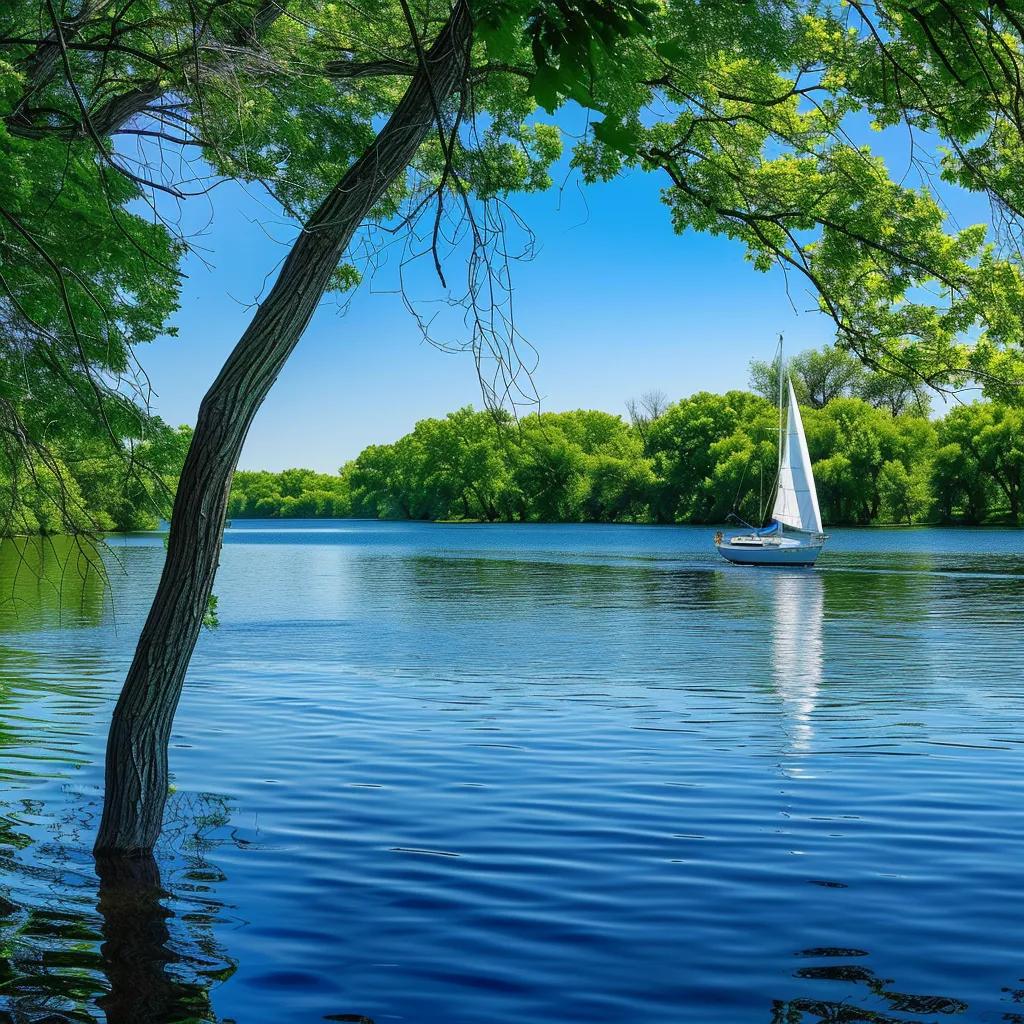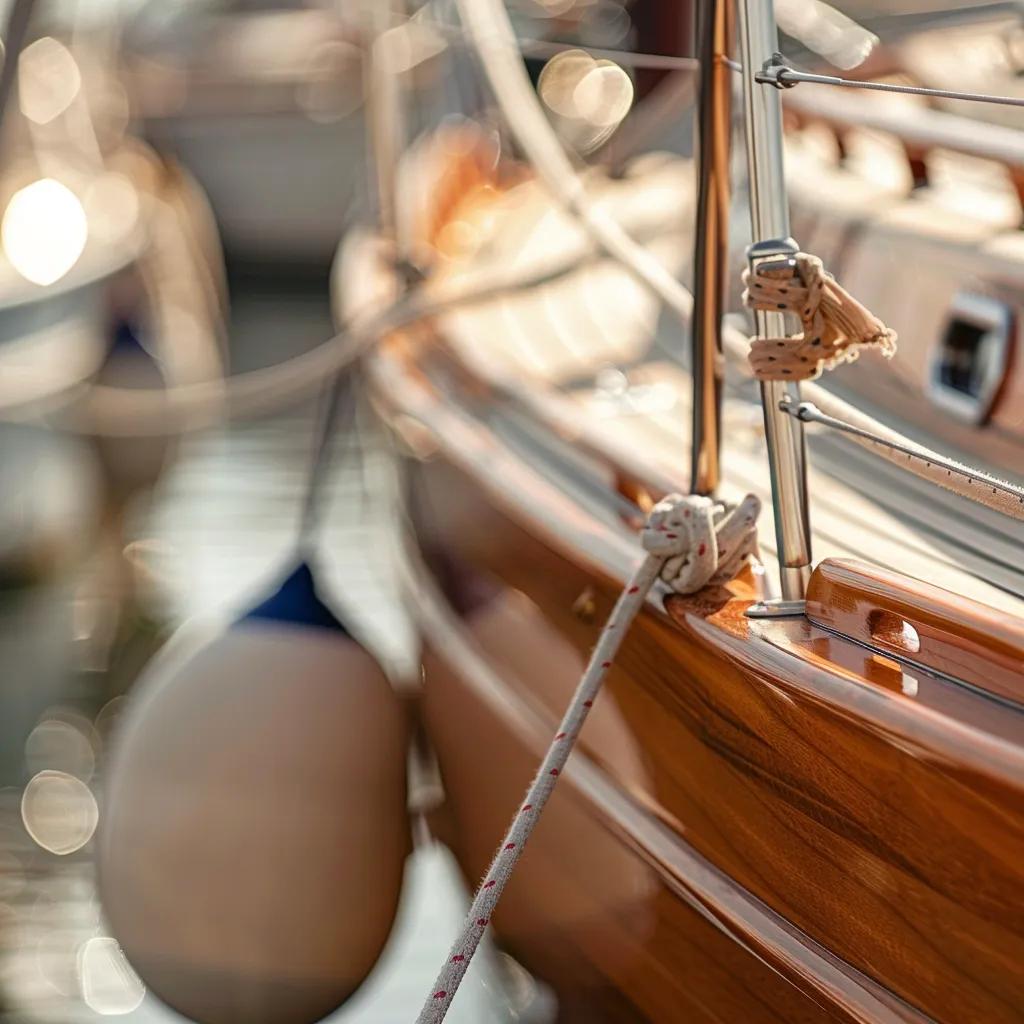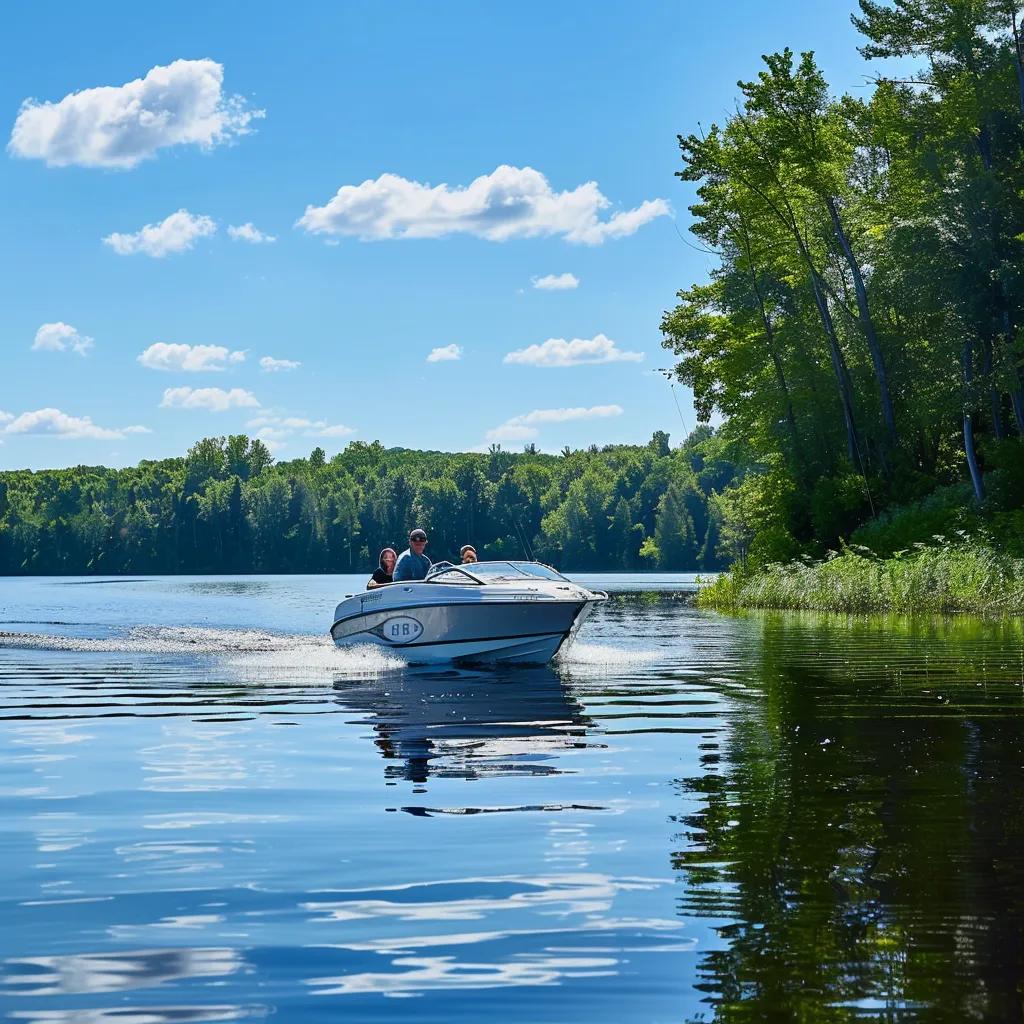Ensure your Brazil tours are safe with travel medical insurance. Protect yourself from unexpected costs and enjoy peace of mind on your adventures.
Do I need Sailboat Insurance in Minnesota

Do I Need Sailboat Insurance in Minnesota? Your Complete Guide to Coverage and Requirements

Every summer, Minnesota’s sailboats glide across over 10,000 lakes, but is sailboat insurance equally essential for your peace of mind and financial security? Sailboat insurance provides liability protection, hull coverage and specialized risk mitigation tailored to inland waters and lender or marina requirements. In this guide, you’ll explore whether insurance is legally required, compare coverage options, understand cost drivers and discount opportunities, navigate the Minnesota DNR registration process, prepare for winter storage, and see how Betters Insurance simplifies every step with expert advice and custom quotes.
In the sections that follow, we’ll cover:
- Legal requirements, conditional mandates and registration implications
- Core and specialized coverage types for sailboats
- Cost factors, average premiums and discount strategies
- Step-by-step quote process and Betters Insurance advantages
- Minnesota’s boat registration rules and exemptions
- Winterization best practices and off-season coverage
- Reasons to partner with Betters Insurance for tailored sailboat policies
Is Sailboat Insurance Legally Required in Minnesota?
No, sailboat insurance is not legally required by Minnesota state law, but it ensures financial protection against liability and physical damage that can occur on the state’s lakes.
As a policy that covers third-party injury, property damage and your own vessel’s repairs, sailboat insurance offers peace of mind and meets the conditions of lenders or marinas when they require proof of coverage. For instance, a financed sailboat on Lake Minnetonka without insurance could leave you responsible for costly repairs after a collision.
What Does Minnesota Law Say About Sailboat Insurance?
Minnesota Statute 86B.301 governs watercraft registration and does not mandate insurance for non-motorized vessels such as sailboats.
State law requires registration for any watercraft powered by sail or motor over 10 feet in length, but it stops short of demanding insurance. Sailboat owners remain legally responsible for any damages or injuries they cause, which underscores the value of voluntary coverage.
This clarity on statutes naturally leads to considerations of conditional requirements imposed by financing institutions and docking facilities.
When Do Lenders and Marinas Require Sailboat Insurance?
Lenders typically require full hull and liability coverage for financed sailboats to protect their collateral.
Marinas and yacht clubs often insist on liability limits—commonly $300,000 per incident—before allowing docking or mooring.
Some insurers also offer slip-specific endorsements that cover damage to marina property or neighboring vessels.
By meeting these conditional mandates, you maintain loan compliance and avoid marina penalties, setting the stage for understanding how registration rules interplay with insurance needs.
How Does Minnesota Boat Registration Affect Insurance Needs?
Boat registration with the Minnesota DNR applies to sailboats over 10 feet in length or vessels equipped with auxiliary motors.
- Registered watercraft must display a current decal and carry proof of registration on board.
- Although proof of insurance isn’t required for a registration decal, lenders and marinas may ask for both registration and insurance documentation.
- Renewals occur every three years, with fees determined by vessel length and type.
Maintaining registration keeps your sailboat compliant with state regulations and supports any insurance claims requiring proof of lawful operation.
Minnesota Boat Registration Requirements
In Minnesota, sailboats exceeding 10 feet in length or those equipped with auxiliary motors are required to be registered with the Minnesota Department of Natural Resources (DNR). This registration process involves completing an application, providing vessel details, paying fees, and displaying decals.
This information clarifies the legal requirements for sailboat owners in Minnesota, which is essential for compliance and insurance purposes.
What Types of Sailboat Insurance Coverage Are Available in Minnesota?

Sailboat insurance in Minnesota integrates multiple coverage options designed to protect owners from liability, physical damage and specialized perils. For example, a comprehensive policy can combine hull coverage with wreckage removal to address sunken boat liabilities.
Sailboat Insurance Coverage
Sailboat insurance policies offer various coverage options, including liability, hull, and specialized coverages like rigging and sail protection. Liability coverage protects against third-party claims, while hull coverage addresses physical damage to the sailboat. Specialized coverages cater to specific risks associated with sailboats.
This citation supports the article’s discussion of the different types of insurance coverage available to sailboat owners, which is crucial for making informed decisions about protecting their vessels.
Below are the core and niche coverages that Minnesota sailboat owners commonly select:
What Is Liability Coverage and Why Is It Important?
Liability coverage protects you against third-party claims for bodily injury and property damage arising from your sailboat’s operation.
- Bodily Injury: Medical expenses and legal defense if a passenger or another boater is hurt.
- Property Damage: Costs to repair or replace docks, other vessels or shoreline structures.
Liability limits typically start at $100,000 per occurrence and can be increased based on marina or lender requirements. Adequate liability coverage preserves your personal assets and ensures compliance with contractual obligations.
How Does Hull Coverage Protect Your Sailboat?
Hull coverage repairs or replaces your sailboat’s physical structure after collision, grounding or comprehensive perils like windstorm and vandalism.
| Valuation Method | Attribute | Value |
|---|---|---|
| Agreed Value | Guaranteed Payout | Predetermined sum regardless of depreciation |
| Actual Cash Value | Depreciation Applied | Market value minus wear and tear |
| Replacement Cost | Full Rebuild Cost | Cost to replace with a new equivalent |
Agreed value guarantees a fixed settlement, while actual cash value reflects market depreciation. Understanding these distinctions helps you choose a valuation method aligned with your vessel’s age and condition.
What Specialized Coverages Should Minnesota Sailboat Owners Consider?
Beyond core protection, specialized coverages address sailboat-specific risks and harsh seasonal conditions:
- Rigging and Sail Coverage protects masts, shrouds and sails from wear or breakage.
- Auxiliary Motor Coverage insures small engines used for docking or emergencies.
- Personal Effects Insurance covers onboard gear like life jackets, electronics and fishing equipment.
These options ensure that the unique components of your sailboat receive tailored protection and allow you to sail with confidence.
What Does Medical Payments and Uninsured Boater Coverage Include?
Medical payments coverage reimburses medical expenses for you and your passengers regardless of fault. Uninsured/underinsured boater coverage steps in when another boater lacks adequate liability insurance.
- Medical Payments: Up to policy limits for hospital bills, ambulance fees and first-aid supplies.
- Uninsured Boater: Compensation for bodily injury if the at-fault boater has insufficient coverage.
Carrying both coverages closes gaps in liability exposure and supports full recovery from boating accidents.
How Do Wreckage Removal and Fuel Spill Coverage Work?
Wreckage removal assists with towing, salvage and disposal costs when your sailboat sinks or runs aground.
Fuel spill liability covers cleanup expenses and environmental fines in the event of a fuel leak.
Together, these coverage types form a comprehensive sailboat insurance policy that addresses both common and specialized risks on Minnesota’s waterways.
How Much Does Sailboat Insurance Cost in Minnesota?

Sailboat insurance premiums vary based on vessel characteristics, owner experience and selected coverages. For example, a 25-foot cruiser with agreed value coverage will typically cost more than a 15-foot daysailer with basic liability limits.
What Factors Influence Sailboat Insurance Premiums?
The following factors drive the cost of your sailboat insurance policy:
- Boat Value and Age: Newer and higher-value vessels command higher premiums.
- Boat Length and Type: Larger cruisers with cabins cost more than small day sailers.
- Boating Experience: Certified safety-course graduates often receive discounts.
- Claims History: A clean record can lower your rate, while past claims may increase it.
- Coverage Limits and Deductibles: Higher liability caps or lower deductibles raise premiums.
Boat length and coverage choices typically account for the largest share of your premium, with owner credentials and claims record influencing the remainder.
What Are Typical Annual Costs for Sailboat Insurance in Minnesota?
Annual sailboat insurance costs in Minnesota generally range from $250 to $1,500, or about 1–5 percent of your boat’s insured value.
- Example: A $20,000 sailboat with agreed value hull coverage and $300,000 liability might cost around $600 per year.
- Example: A $50,000 cruiser with full coverage can approach $1,250 annually.
These cost estimates help you budget for coverage and compare quotes from multiple providers.
How Can You Qualify for Sailboat Insurance Discounts?
Qualify for savings with these proven strategies:
- Complete a U.S. Coast Guard–approved boating safety course.
- Bundle your sailboat policy with auto or homeowner’s insurance.
- Maintain a claims-free record for multiple policy terms.
- Install safety features like fire extinguishers, navigation lights and bilge alarms.
Earning these discounts can reduce your premium by 10–20 percent and reward responsible boating practices.
How Do You Get a Sailboat Insurance Quote in Minnesota?
Requesting a sailboat insurance quote involves providing vessel details, coverage preferences and owner credentials. Accurate information ensures you receive a precise and competitive premium estimate.
What Information Is Needed to Request a Quote?
When you request a quote, you’ll typically supply:
- Boat make, model and year.
- Hull identification number (HIN).
- Length overall and beam width.
- Estimated hull value and engine type.
- Navigational area and storage location.
- Boating experience and safety certifications.
- Drivers information (reminder Minnesota will soon require boating licenses, this will appear in laws in a phased approach over the next few years)
Providing complete details up front accelerates underwriting and avoids follow-up questions.
How Does Betters Insurance Simplify the Quote and Purchase Process?
Betters Insurance streamlines sailboat coverage with:
- A dedicated marine insurance specialist for personalized guidance.
- Online quote tools that aggregate top carriers to find the best rates.
- Clear policy comparisons and side-by-side coverage breakdowns.
- End-to-end digital application and e-signature capabilities.
With Betters Insurance, you save time, gain expert insights and secure tailored protection without hidden fees or jargon.
What Is the Minnesota Boat Registration Process for Sailboats?
Registering your sailboat with the Minnesota DNR ensures legal operation on public waters and correct decal display. Registration status also supports insurance claims that require proof of lawful use.
When Is Boat Registration Required for Sailboats in Minnesota?
Boat registration is required if your sailboat:
- Exceeds 10 feet in length or uses an auxiliary motor.
- Is powered by sail alone but over 10 feet long.
- Shares docking facilities subject to DNR oversight.
Registration decals remain valid for three years and must be renewed before expiration to avoid fines.
How Do You Register Your Sailboat with the Minnesota DNR?
Follow these steps to register your sailboat:
- Complete the online application at the DNR website.
- Provide vessel details: length, HIN, hull material and home port.
- Pay registration fees based on boat length ($20–$80).
- Receive decals by mail and affix them to the bow.
Successful registration confirms your boat’s compliance and supports any insurance documentation requirements.
Are There Any Exemptions or Special Rules for Sailboat Registration?
Certain sailboats qualify for exemptions:
- Non-powered sailboats under 10 feet in length.
- Sailboats registered in another U.S. state and temporarily visiting Minnesota waters.
- Nonresident owners using the boat for less than 90 days per year.
Understanding these exceptions helps you avoid unnecessary fees and paperwork.
How Should Minnesota Sailboat Owners Prepare for Winter and Off-Season Insurance?
Minnesota winters bring freezing temperatures, ice and vermin risks that can damage unprotected sailboats. Winterization and off-season coverage ensure your vessel remains covered when laid up.
What Is Winterization and Why Is It Important for Insurance?
Winterization involves draining water from engines, winterizing plumbing systems and sealing hull openings to prevent freeze damage. Insurance policies often require documented winterization to cover ice-related perils and freeze losses.
Proper winterization reduces the likelihood of insurance claim disputes and supports full coverage during cold months.
What Off-Season Coverage Options Are Available?
During off-season storage, you can maintain limited coverage through:
- Storage Liability: Protects against theft, vandalism and fire while your boat is ashore.
- Vermin Damage Protection: Covers damage from rodents nesting in hull cavities.
- Slip and Rack Endorsements: Ensures coverage for boats stored on racks or trailers.
These options preserve essential protections and prevent coverage gaps when active navigation ceases.
Why Choose Betters Insurance for Sailboat Insurance in Minnesota?
Betters Insurance combines local expertise, tailored solutions and independent advocacy to deliver unmatched sailboat coverage across Minnesota’s inland waters.
What Local Expertise Does Betters Insurance Offer Minnesota Sailboat Owners?
With in-depth knowledge of Minnesota’s boating laws, lake hazards and seasonal challenges, Betters Insurance guides owners to:
- Select coverages adapted to ice-season risks and invasive species surcharges.
- Navigate DNR registration rules and marina requirements.
- Access local claims adjusters familiar with area conditions.
This regional expertise ensures policies match real-world sailing conditions on lakes like Minnetonka and Mille Lacs.
How Does Betters Insurance Tailor Policies to Individual Needs?
Betters Insurance crafts customized sailboat policies by:
- Assessing vessel value, usage patterns and owner experience.
- Recommending coverage combinations that align with budget and risk tolerance.
- Providing flexible deductibles and optional endorsements for rigging, sails and electronics.
Personalized policy design maximizes protection while optimizing premium costs.
What Are the Benefits of Working with an Independent Insurance Agent?
An independent agent like Betters Insurance offers:
- Access to multiple carriers for side-by-side premium comparisons.
- Unbiased advice focused on your best interests rather than a single company’s products.
- Ongoing policy reviews to ensure your coverage evolves with your boating lifestyle.
Independent advocacy secures the most competitive protection and keeps you informed about new discount opportunities.
By choosing Betters Insurance, you benefit from local insight, tailored policy design and dedicated support throughout your sailing journey.
Sailboat insurance may not be legally required in Minnesota, but it stands as your first line of defense against unpredictable on-water incidents. From liability to hull damage, winter perils to fuel spills, comprehensive coverage safeguards both your vessel and personal assets. With Betters Insurance’s streamlined quoting process, regional expertise and customized policies, you can navigate Minnesota’s lakes with confidence. Request a personalized quote today and set sail knowing you’re fully protected.
Frequently Asked Questions
What Should I Consider When Choosing Sailboat Insurance in Minnesota?
When selecting sailboat insurance, consider factors such as the type of coverage you need, the value of your vessel, and your boating habits. Evaluate whether you require basic liability, comprehensive hull coverage, or specialized options like rigging protection. Additionally, assess your experience level and any discounts available for safety courses. Understanding your specific needs will help you choose a policy that provides adequate protection while fitting your budget.
How Can I Ensure My Sailboat is Properly Winterized?
Proper winterization involves several key steps: drain all water from the engine and plumbing systems, add antifreeze to prevent freezing, and seal any openings to keep out pests. It’s also advisable to clean the hull and store the sailboat in a dry, sheltered location. Documenting these steps is crucial, as many insurance policies require proof of winterization to cover ice-related damages. Consulting a professional can also ensure thorough preparation for winter.
What Are the Risks of Not Having Sailboat Insurance?
Not having sailboat insurance exposes you to significant financial risks. In the event of an accident, you could be held liable for bodily injury or property damage, leading to costly legal fees and settlements. Additionally, without hull coverage, you would bear the full cost of repairs or replacement if your sailboat is damaged or lost. Insurance provides peace of mind and financial protection, making it a wise investment for any sailboat owner.
An important risk to recognize is the loss of personal equipment, such as fishing gear, navigation equipment and other expensive boating proprty.
One critical risk that boaters must recognize is the potential loss of personal equipment, including fishing gear, navigation tools, and other expensive boating accessories. When heading out on the water, it’s easy to become focused on the excitement of the adventure, but the financial implications of losing valuable equipment can be significant. Items like high-quality fishing rods, GPS units, and safety gear not only come with steep price tags but also hold immense value to the personal experience of a boater. A single mishap could result in not just the inconvenience of replacing these items, but also the frustration of being unprepared for a successful outing.
To mitigate the risk of equipment loss, it’s essential to implement preventative measures. Boat owners should consider investing in secure storage solutions, such as lockable compartments or gear racks, and develop a habit of properly stowing equipment when it’s not in use. Regular inventory checks can help ensure that all valuable items are accounted for before heading out. Additionally, having the right insurance coverage can make a significant difference in recovery after a loss, allowing boaters to replace their gear without incurring a substantial financial burden. By acknowledging the risk and taking proactive steps, boaters can help safeguard their investments and enhance their overall boating experience.
Can I Get Coverage for My Sailboat While It's in Storage?
Yes, you can obtain off-season coverage for your sailboat while it is in storage. This typically includes storage liability, which protects against theft, vandalism, and fire, as well as vermin damage protection. Some policies also offer slip and rack endorsements to cover boats stored on trailers or in marinas. Maintaining insurance during the off-season ensures that your vessel is protected from various risks even when not in use.
What Should I Do If I Have an Accident While Boating?
If you have an accident while boating, prioritize safety by checking for injuries and calling for medical assistance if needed. Document the incident by taking photos and gathering information from other parties involved, including their insurance details. Notify your insurance provider as soon as possible to report the claim. Providing thorough documentation will help facilitate the claims process and ensure you receive the coverage you need for damages or injuries.
Are There Any Special Considerations for Insuring a Used Sailboat?
When insuring a used sailboat, consider its age, condition, and any modifications made by previous owners. Older boats may require specialized coverage for parts that are no longer manufactured. Additionally, assess the boat’s maintenance history and any existing warranties. It’s also wise to have a marine survey conducted to determine the vessel’s value and condition, which can influence your insurance premiums and coverage options.
How Often Should I Review My Sailboat Insurance Policy?
It’s advisable to review your sailboat insurance policy annually or whenever there are significant changes in your circumstances, such as purchasing a new boat, upgrading equipment, or changing your boating habits. Regular reviews ensure that your coverage remains adequate and that you are taking advantage of any available discounts. Additionally, staying informed about changes in local laws or insurance offerings can help you make the best decisions for your coverage needs.
Conclusion
Sailboat insurance may not be legally required in Minnesota, but it stands as your first line of defense against unpredictable on-water incidents. From liability to hull damage, winter perils to fuel spills, comprehensive coverage safeguards both your vessel and personal assets. With Betters Insurance’s streamlined quoting process, regional expertise, and customized policies, you can navigate Minnesota’s lakes with confidence. Request a personalized quote today and set sail knowing you’re fully protected.
Author: Nathan Betters Insurance Agency LLC. Licensed in Minnesota, Iowa, Wisconsin, Illinoise, California, Oregon, Texas, Florida, Maine, Massachussets, New York, South Carolina.



